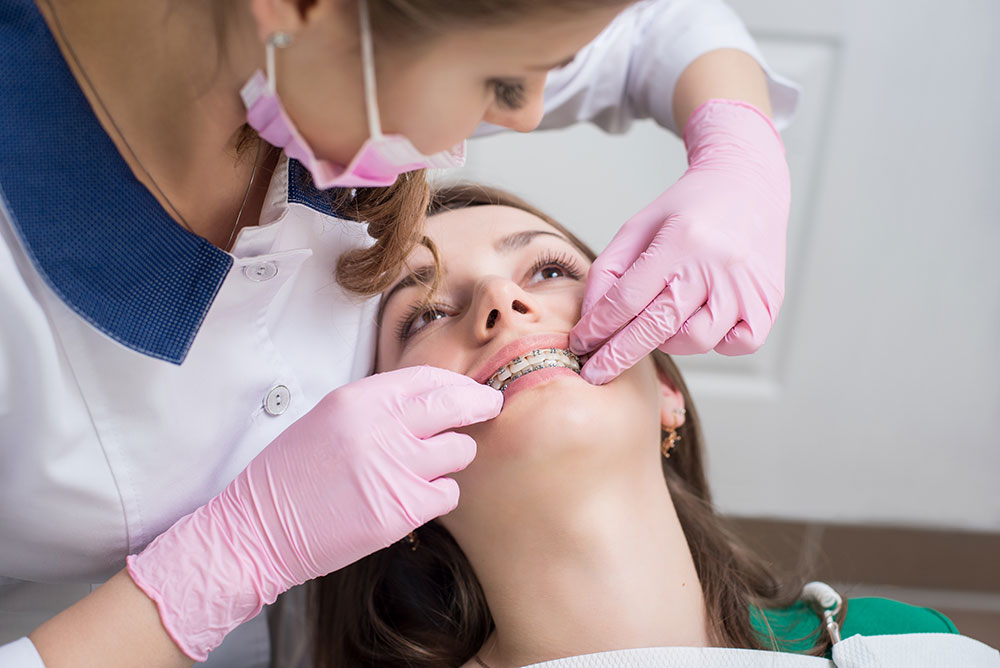The Definitive Guide for Legacy Orthodontics
Table of ContentsUnknown Facts About Legacy OrthodonticsLegacy Orthodontics Fundamentals ExplainedThe Only Guide for Legacy OrthodonticsSome Known Details About Legacy Orthodontics The 9-Minute Rule for Legacy Orthodontics
In addition, we provide flexible therapy timetables, adaptable repayment options and a fun, enjoyable experience.An orthodontist is a dental practitioner trained to diagnose, prevent, and treat teeth and jaw irregularities. They remedy existing conditions and are educated to identify troubles that might create in the future. Orthodontists work with individuals of all ages, from children to grownups. People often link a best smile with health.
Malocclusion, or misaligned teeth, can bring about oral problems, including tooth degeneration, gum disease, and hard or uncomfortable eating. Yet not everyone is born with straight teeth. If you have a bad bite or big rooms between your teeth, you might intend to seek advice from a dentist specializing in orthodontic care.
All About Legacy Orthodontics
( Picture Credit History: DigitalVision/Getty Images) Orthodontists utilize repaired and removable dental devices, like dental braces, retainers, and bands, to change the setting of teeth in your mouth. Orthodontic treatment is for oral abnormalities, including: Jagged teethBite problems, like an overbite or an underbiteCrowded teeth or teeth that are as well far apartJaw misalignmentThe goal of orthodontic treatment is to improve your bite.
While you might assume of orthodontists as mostly for kids or teenagers that need braces, they can deal with oral problems at any kind of age. Orthodontists participate in college, dental college, and orthodontic institution.
, however not all dentists are orthodontists. They focus on two areas: Just how to appropriately and securely move teeth Exactly how to effectively assist development in the teeth, jaw, and faceOnce an orthodontist has actually completed training, they have the option to end up being board certified.
Legacy Orthodontics for Dummies
Imbalance, or malocclusion, is the most usual reason individuals see an orthodontist. It is hereditary and is the outcome of dimension differences between the top and lower jaw or between the jaw and teeth. Malocclusion leads to tooth congestion, a twisted jaw, or irregular bite patterns. Malocclusion is normally treated with: Your orthodontist affixes metal, ceramic, or plastic square bonds to your teeth.
If you have only small malocclusion, you may have the ability to make use of clear braces, called aligners, as opposed to traditional dental braces (https://www.pearltrees.com/legacyortho#item681651393). Some people require a headwear to assist move teeth into line with stress from outside the mouth. After dental braces or aligners, you'll need to put on a retainer. A retainer is a customized gadget that maintains your teeth in place.
They're most frequently made use of on youngsters. They can create additional area in the mouth without needing to pull teeth. If you have a significant underbite or overbite, you may need orthognathic surgical procedure (additionally called orthodontic surgery) to lengthen or shorten your jaw. Orthodontists use cables, medical screws, or plates to sustain your jaw bone.
You may need to see an orthodontist if you have: Crowding or otherwise adequate area for every one of your teethOverbite, when your top teeth come your base teethUnderbite, when your bottom teeth are as well much forwardSpacing or problems with gapsCrossbite, which is when your upper teeth fit behind your bottom teeth when your mouth is closedOpen bite or a vertical void in between your front bottom and top teethMisplaced midline, when the center of your base and upper teeth do not align Dealing with a dental malocclusion can: Make attacking, eating, and speaking easierImprove the balance of our face and your general appearanceEase discomfort from temporomandibular joint conditionsSeparate your teeth and make them simpler to clean up, aiding prevent tooth degeneration or dental caries It's typically a dental practitioner that initially notices misaligned teeth during a routine examination.
The 9-Minute Rule for Legacy Orthodontics

During your initial orthodontic examination, you'll likely have: An oral examPhotos taken of your face and smileDental X-raysPanoramic (360 degree) X-rays of your face and headImpressions to create mold and mildews of your teethThese examinations will certainly aid your orthodontist understand exactly how to continue with your therapy. orthodontist. An orthodontist is a dental professional that's had training to treat your teeth and jaw
Orthodontists might do surgical treatment, exams,X-rays,and more to help you achieve a more comfortable, healthier smile. An orthodontist is concentrated on your bite, so something like a cracked tooth would be dealt with by a dental expert. Orthodontists are dental professionals yet not all dental practitioners are orthodontists. Orthodontists are concentrated on your bite, or the means your teeth meshed, and the straightness of your teeth.
Ever questioned how celebs constantly seem to have flawlessly lined up teeth? The solution typically exists in the proficient hands of an orthodontist. But exactly what does an orthodontist do? Orthodontists are oral experts who concentrate on remedying abnormalities in the teeth and jaws. Their expertise exceeds simply creating an attractive smile; it includes enhancing your total dental health and wellness and feature.
The 5-Minute Rule for Legacy Orthodontics

While braces are the most typically acknowledged orthodontic treatment, orthodontists have a varied toolkit at their disposal. The details technique selected relies on the intensity of the case, the patient's age, and private choices. These reliable dental braces use a system of have a peek at this website brackets adhered to the teeth and linked by cables.
Clear aligners, like Invisalign, are a popular option for people seeking a more discreet treatment option. These detachable trays are tailor-made to considerably move the teeth's placement. Headwear might be utilized along with braces or aligners to apply extra targeted pressures, especially for correcting jaw inconsistencies. In instances of slim jaws, palatal expanders can be used to develop area for appropriate tooth placement.